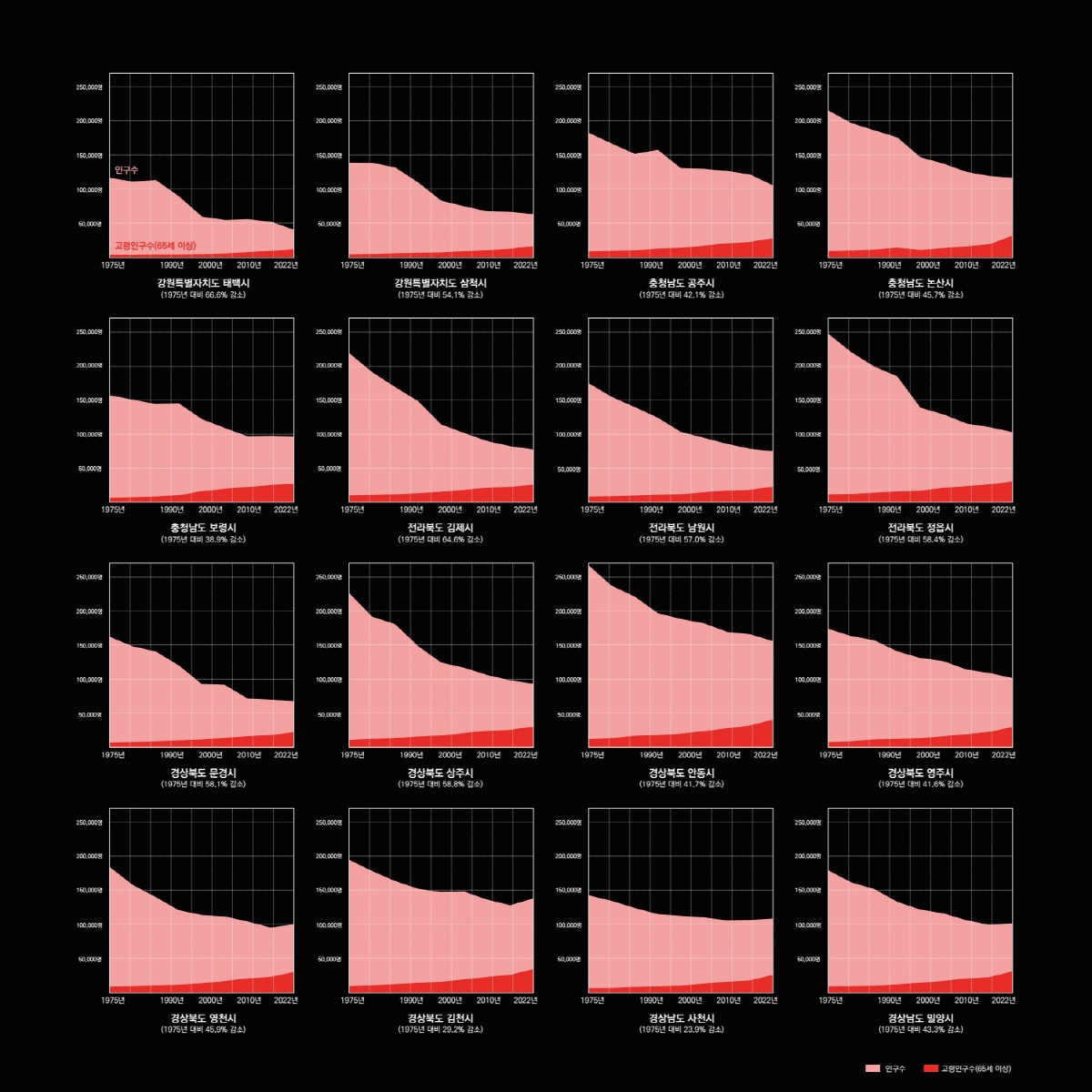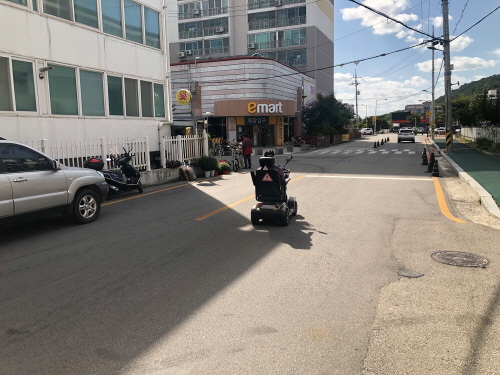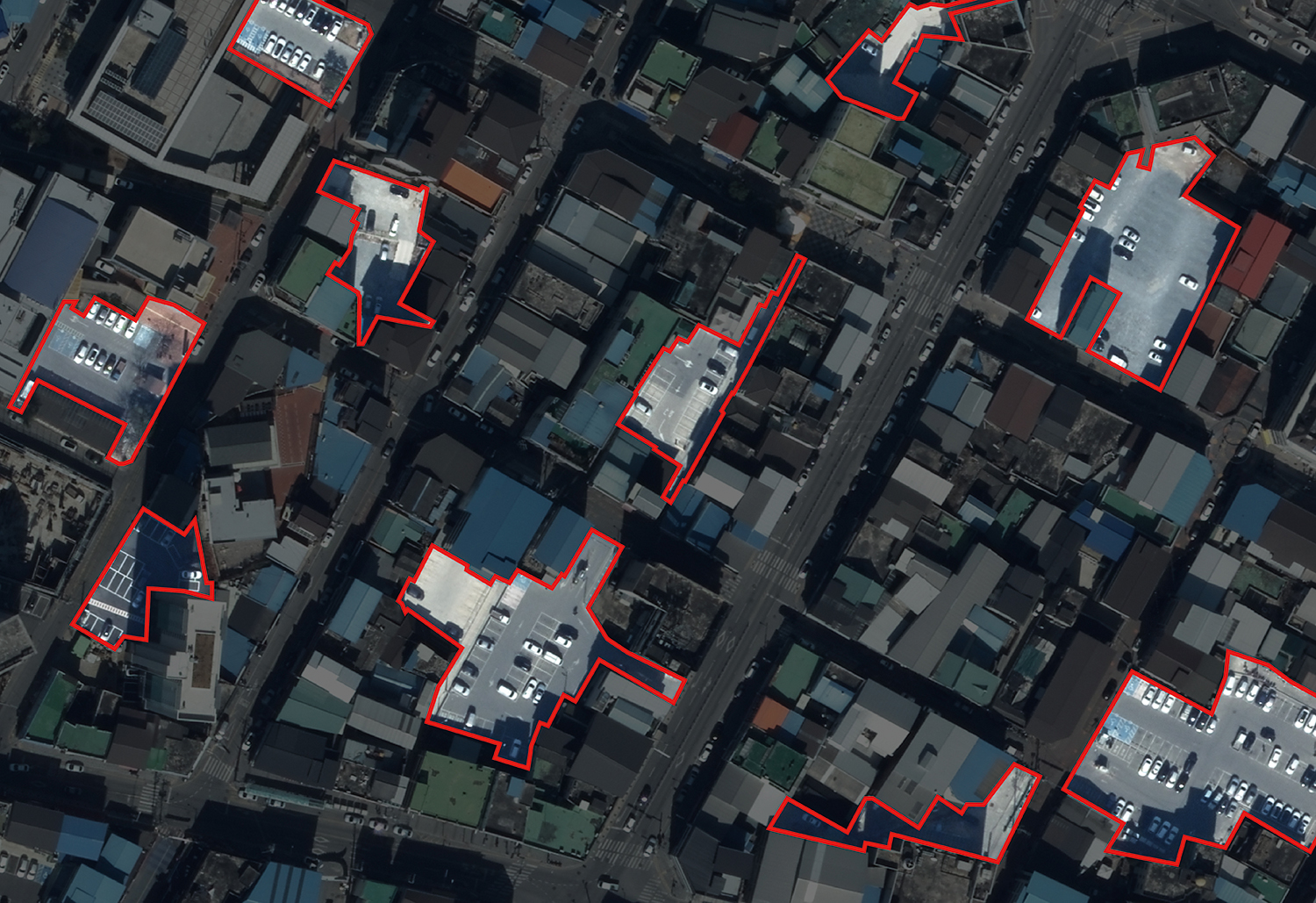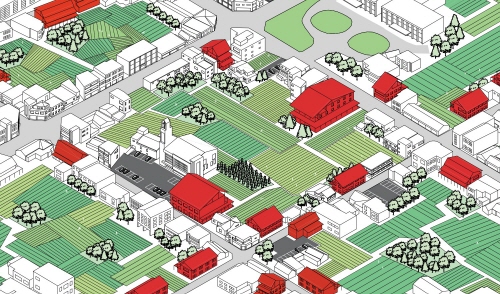SPACE October 2024 (No. 683)
Rapid population decline is shaking the fabric of small and medium-sized cities to the core. To rebuild these cities, we need to move away from the inertia of regeneration and take a perspective that acknowledging change. This is where the Mid-Size City Forum comes in. They look at phenomena outside the metropolitan area and seek urban and architectural alternatives to the crisis.
[Series] The Possibilities Inherent in Extinction, Mid-Size City Forum
01 What is Happening Outside the Metropolitan Area
02 Thinning Phenomenon
03 Urban Perforation
04 Erasing Plan
05 Ad-hoc Architecture 1
06 Ad-hoc Architecture 2
07 Global Mid-Size City
08 Resilient Mid-Size City
09 Fantastic Mid-Size City
10 Outside of the Mid-Size City
‘Ad-hoc architecture’ in medium and small sized (hereinafter mid-size) cities occurs as naturally as opening an umbrella in the rain or letting a shawl drift in the wind. Improvised additions, such as casually placed canopies and exterior staircases, are often tacky, sloppy, and incomplete. But now, in mid-size cities, it is rare to find a building with nothing adorning it. Why is ad-hoc architecture inevitable and so prevalent in mid-size cities? Mid-Size City Forum explore new possibilities for this seemingly inescapable trend.
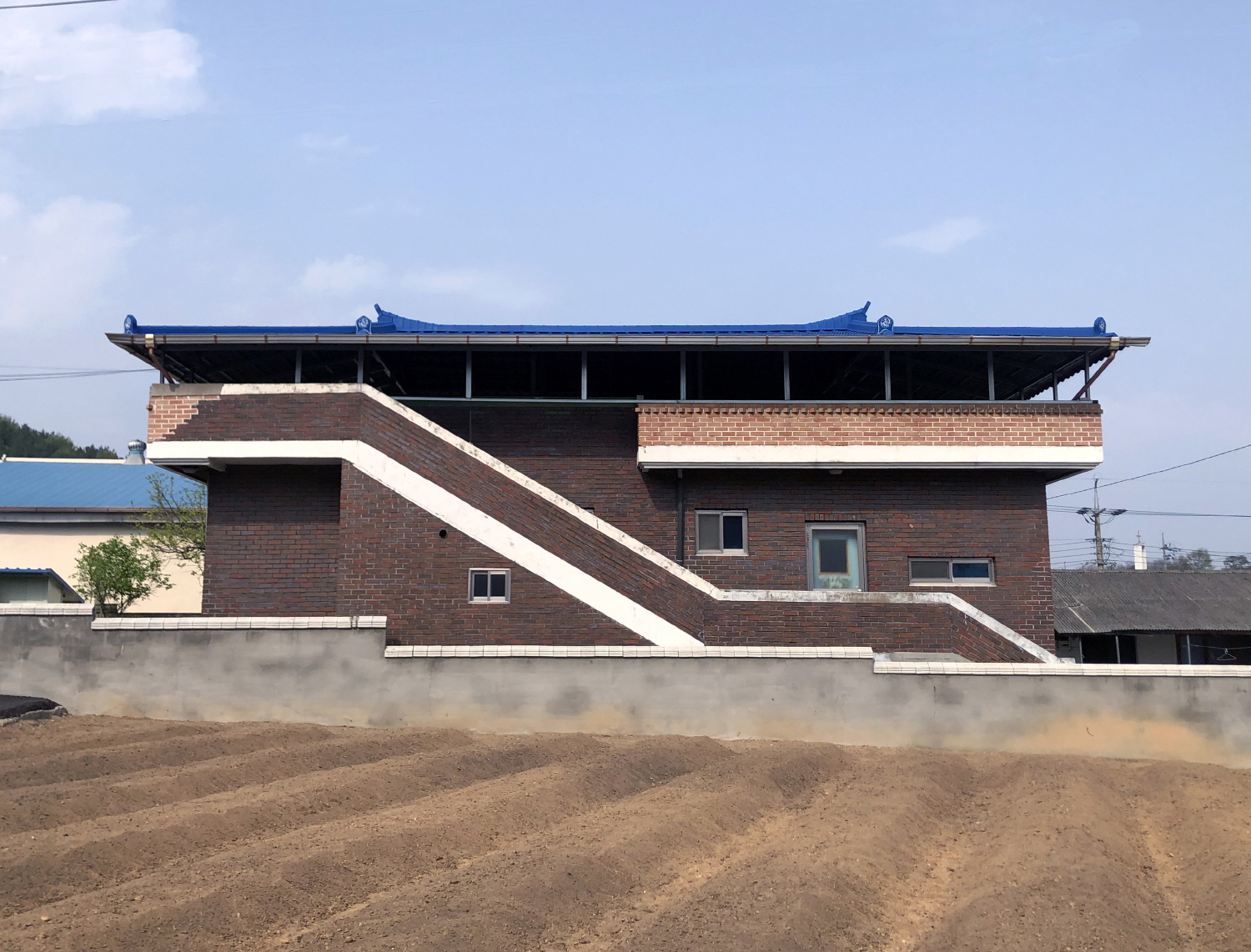
Ad-hoc architecture in Buyeo
As the populations of mid-size cities shrink, vacant houses are created, and unoccupied buildings are demolished one by one, leaving empty spaces all over the city. Discussions regarding this phenomenon in mid-size cities have taken place under the banners of ‘urban perforation’ and ‘erasing plans’, and so tend to focus on the spaces that have been vacated. This article, however, is about the buildings that have not been demolished. What is happening to architecture in mid-size cities with shrinking populations?
If you look around mid-size cities across the country, it is not hard to spot a common phenomenon: a new roof is added to an existing building. These added roofs appear everywhere, from cities with harsh winters like Taebaek and Jecheon to cities with milder climates like Boryeong and Yeosu. Why is this shared across the country? Is it because there is some common denominator that makes them ubiquitous? Or is the reason for this linked to the ongoing process of urban decline across the country? To understand why, this phenomenon must be examined not simply within the framework of architecture but in a broader political, economic, and social context. In this issue, we explore the contexts and characteristics of ‘ad-hoc architecture’ in mid- size cities as well as the urban and architectural possibilities of ad-hoc architecture in those cities.
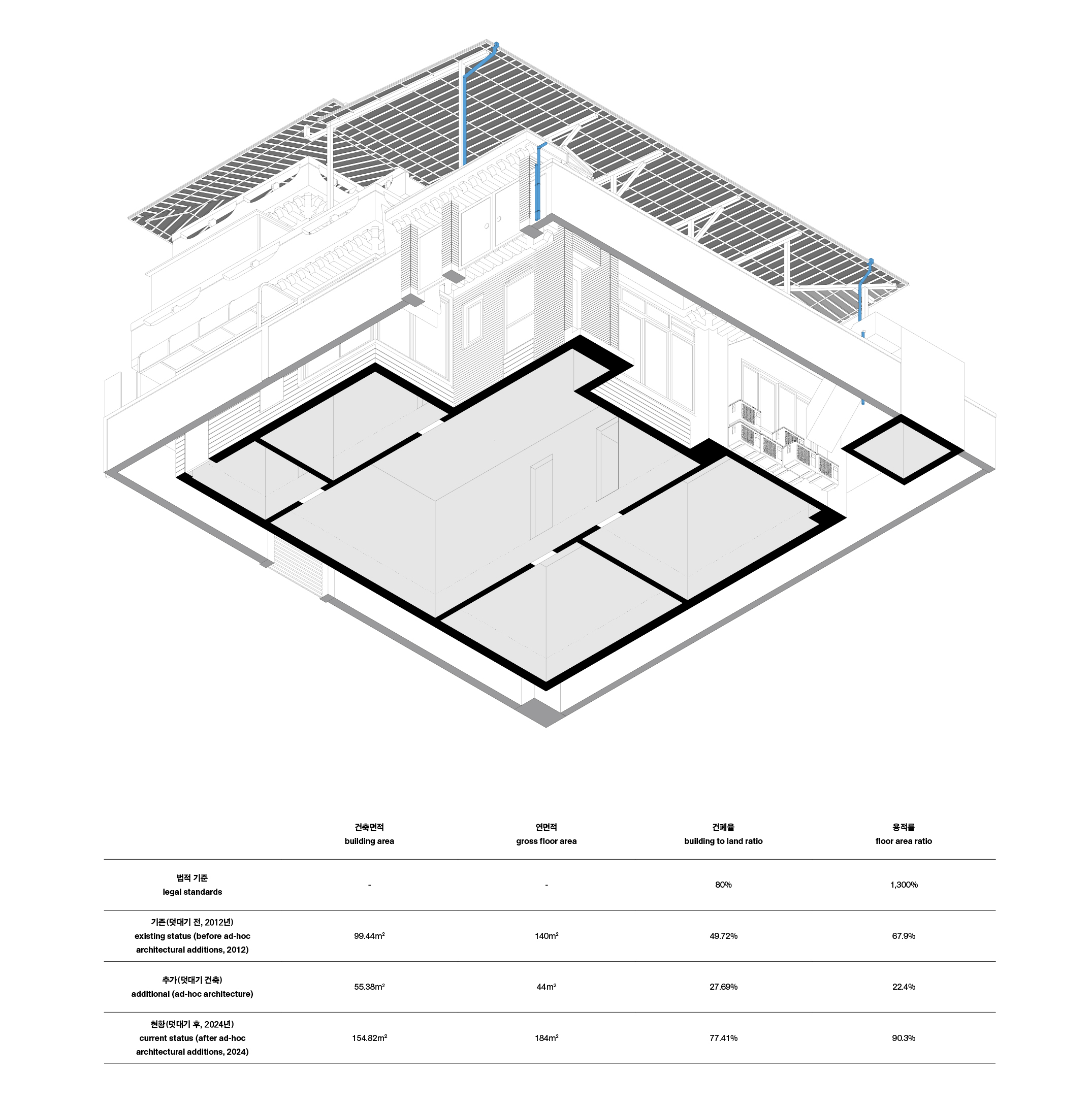
Worm’s eye view isometric of the ad-hoc architecture (production: Kim Minjeong, Kim Youbin) and comparison of urban density figures before and after ad-hoc architectural additions (Muyang-dong, Sangju). Ad-hoc architecture goes beyond the transformation of individual buildings and is changing the face of the city as a whole.
Why Does Ad-Hoc Architecture Occur?
Rather than emerging due to a single reason, ad-hoc architecture results from a combination of reasons. Functional reasons trigger it, but economic reasons determine its form and materials, while social ones tolerate its recurrence and architectural ones support its possibilities. Ad-hocs are born out of necessity as buildings age. Specifically, they were prompted to stop rainwater leaks from rooftops. As we saw in the previous article (covered in SPACE No. 680), many buildings in mid-size cities are detached houses. Most detached houses in mid-size cities were built in the 1970s – 1990s when most detached houses were planned with flat roofs. Around the same time, while detached houses in large cities such as Seoul were mostly planned with gabled roofs in the style of ‘french houses’, flat roof plans became popular in mid-size cities due to their ability to be used for various purposes such as drying crops. These homes are now 30 to 50 years old, and one of the first signs of ageing is leaking through cracks in the roof’s waterproofing layer. To stop roof leaks, one must replace the roof’s waterproof layer with a new one. However, even if one replaces the waterproof layer with a new one, it will only last three to five years at most. This approach requires periodic refurbishment and replacement, ...
※You can read the full article with more information on the SPACE October 2024 (No. 683).






